Ellen Heimpel has just published a paper on the bemba forests of central Africa2 . You can read and download it here. In this article Ellen shows that there are plants that occur in much higher numbers in the bemba forest compared to the adjacent mixed species forest. Bemba forest is famous for being a tropical rain forest dominated by a single species: Gilbertiodendron dewevrei. What has not been recognised by scientists is that there are plant species that we call “Gilbertiodendron associates” or “bemba specialists”.
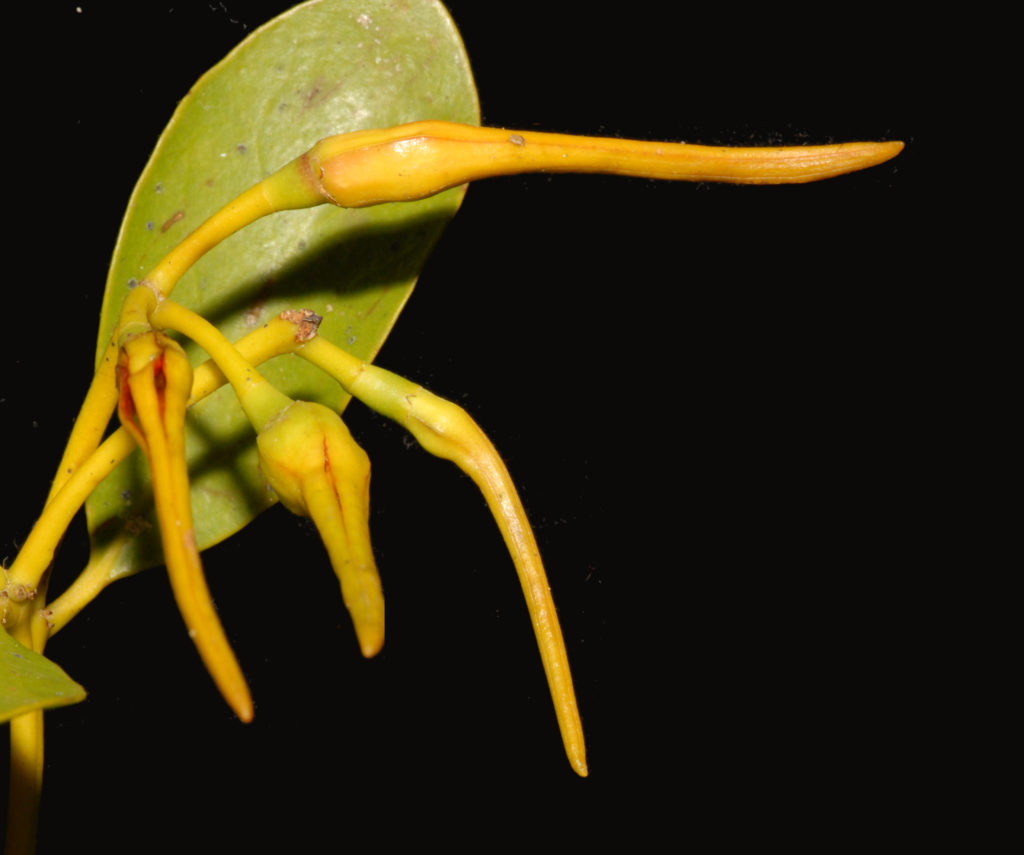
This study was part of Ellen’s PhD, based at RBGE with the school of Geosciences at the University of Edinburgh . One thing that is special about Ellen’s paper is that she used ecological information in the form of plot data (fixed area samples in the forest in which all the trees above a certain diameter are measured) and taxonomic data in the form of herbarium specimens. Both datasets have their strengths. Her analysis of the ecological plot data highlights one set of Gilbertiodendron dewevrei associates and the herbarium specimen data works better for another set, generally the rarer species.
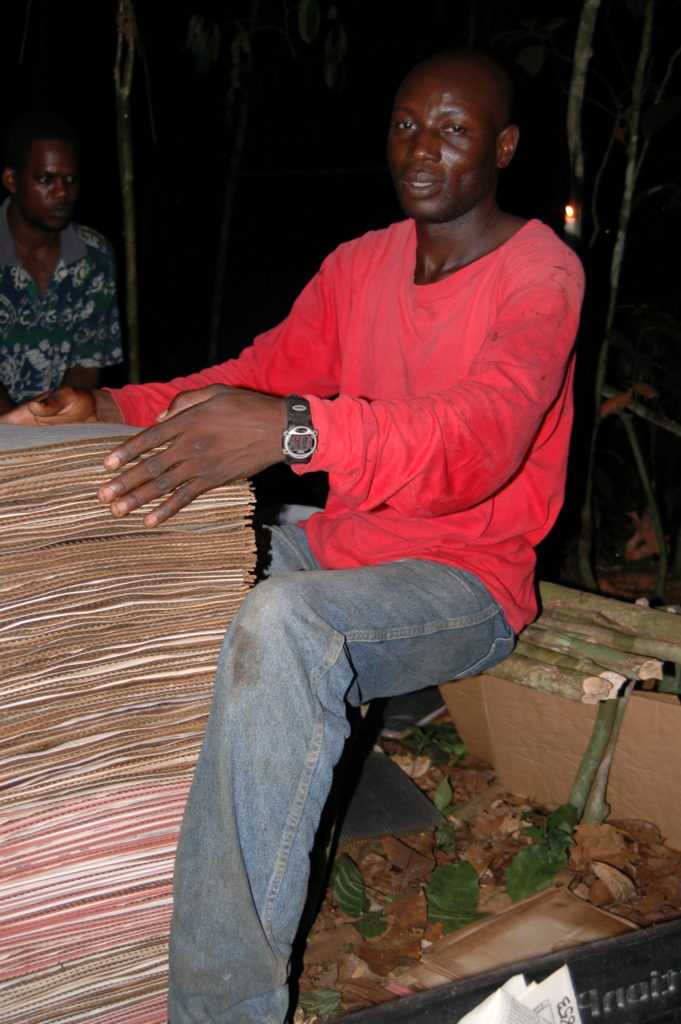
In her analysis of ecological data on species composition Ellen used Detrended Correspondence Analysis (DCA) and Non-metric Multidimensional Scaling (NMDS). These analyses summarise plant community data by placing similar samples close together and dissimilar samples far apart. You can see how the sample plots in bemba forest are distinguishable on species composition from those in nearby adjacent mixed species forest in the figure below. Ellen removed the Gilbertiodendron dewevrei stems from the data when she performed an analysis of similarities (ANOSIM) and showed that it is not just the presence of G. dewevrei that causes the differences.
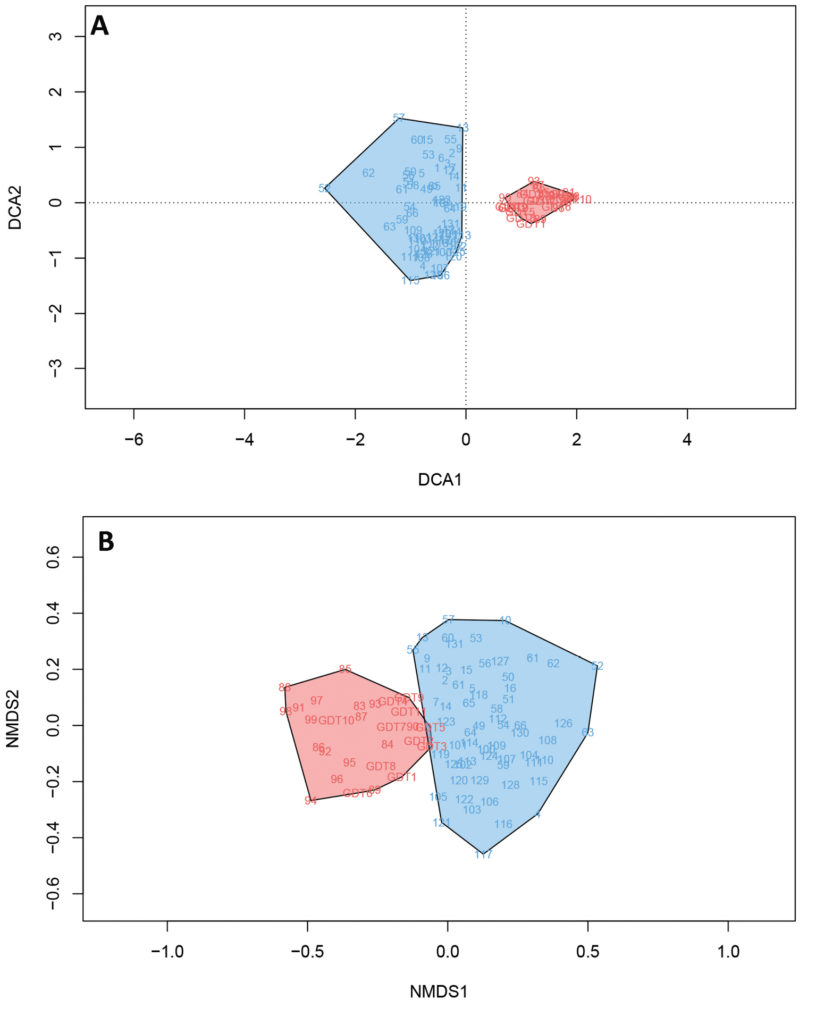
The analysis of the herbarium specimen records was based on 3500 herbarium specimens collected in different habitats in the Sangha Trinational protected area shared between Republic of Congo, Central African Republic, and Cameroon. Ellen analysed the habitats in which the plants occurred resulting in a list of 52 species with proportionally more records in bemba forest.
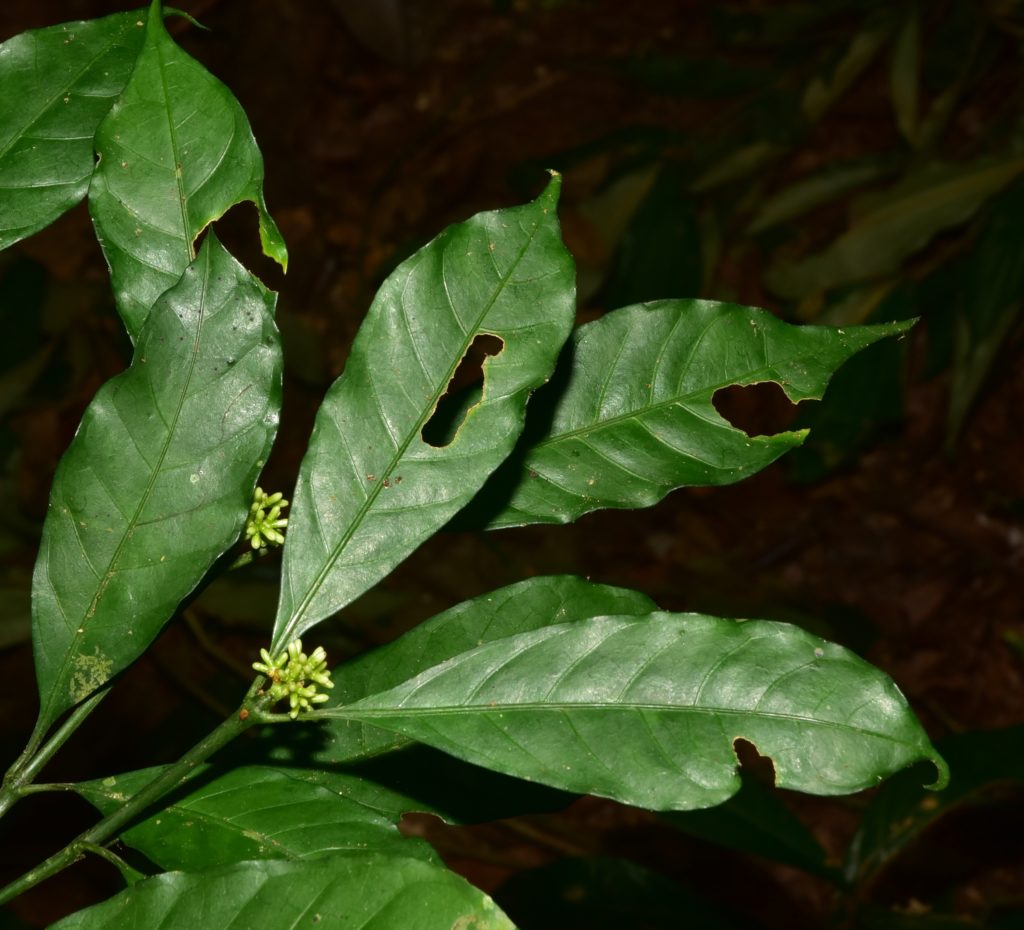
When we look at the species that are found in Gilbertiodendron dewevrei forest, there are a couple of things to notice. The plants cover most of the main life forms. There are bemba specialist trees, bemba specialist shrubs, bemba specialist climbers and there is even a specialist mistletoe high up in the crowns of bemba trees. Another thing is that some of the species are very rare, have never been recorded in plot sampling and only collected as herbarium specimens a few times over the whole of their range. But it is not all about rarity, some species are just very poorly known. When looked at carefully by taxonomists they can turn out to be widespread and common. One example of bemba associates is Chassalia lutescens in the coffee family. It was only given a scientific name in 2010 despite being common and widespread.
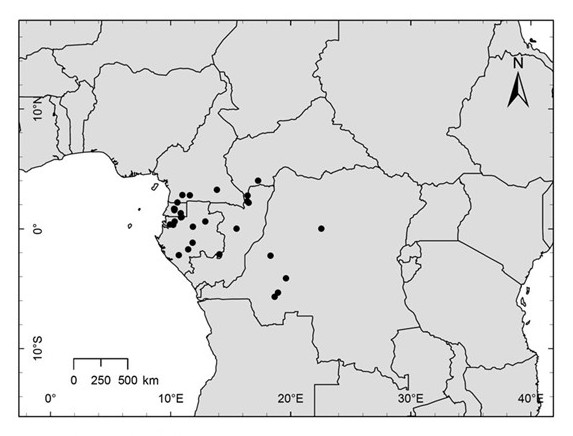
It is obvious that taxonomists contribute scientific names to ecological research, but they also bring much more: hypotheses on evolutionary history, phylogenies, traits and distributions. For many rare species everything that the scientific community knows about them is found in the taxonomic literature.
Sometimes taxonomists and herbarium curators can be a little dismissive of ecologists bringing badly pressed specimens without flowers, fruit, or even labels to the herbarium for identification. But if taxonomists can identify the material, they can access crucial understanding of the roles that plants play in ecosystems. And even those sterile herbarium specimens are now being recognised as a resource to help speed up the description of tree species including some of the taxonomically incalcitrant families like Putranjivaceae4, 6 and Lauraceae5 .
Ecology and Taxonomy have long been related and interconnected disciplines. With the general trend in science towards specialisation over the last 60 years many of the connections between the two disciplines have been broken. With studies like the one led by Ellen with ecologists and a taxonomists as authors, and a recent review paper by Tim Baker and Toby Pennington1 there are signs that ecologists and taxonomists are both rediscovering the contributions of the other discipline.
References
- Baker TR, R. Pennington RT, Dexter KG, Fine PVA, Fortune-Hopkins H, Honorio EN, Huamantupa-Chuquimaco I, Klitgård BB, Lewis GP, de Lima HC, Ashton P, Baraloto C, Davies S, Donoghue MJ, Kaye M, Kress WJ, Lehmann CER, Monteagudo A, Phillips OL, Vasquez R, (2017) Maximising Synergy among Tropical Plant Systematists, Ecologists, and Evolutionary Biologists. Trends in Ecology & Evolution 32. 258-267.
- Heimpel E, Ahrends A, Dexter KG, Hall JS, Mamboueni J, Medjibe VP, Morgan D, Sanz C, Harris DJ2 (2024) Floristic and structural distinctness of monodominant Gilbertiodendron dewevrei forest in the western Congo Basin. Plant Ecology and Evolution 157(1): 55-74. https://doi.org/10.5091/plecevo.111539
- Lachenaud O. & Harris D.J. (2010) Three new species of Psychotria and Chassalia (Rubiaceae) from Central Africa. Edinburgh Journal of Botany 67 (2): 219-233.
- Quintanar, A., Barberá, P., Nguema, D. Medjibe, V., Goodwin, Z.A., Onana, J.M. Ndolo Ebika, S.T., Ewango, C.E.N., Moutsamboté, J.M. & Harris, D.J. (2021) Lurking in the Shadows: A New Species of Drypetes (Putranjivaceae) from Central Africa Hiding in Forest Plots and Herbaria. Novon: A Journal for Botanical Nomenclature Vol. 29,.
- van der Werff H, and Vicentini A. (2000) New Species of Lauraceae from Central Amazonia, Brazil. Novon, vol. 10, no. 3, 264–97.
- Vasquez R. (2014). Una nueva especia de Drypetes Vahl (Putranjivaceae) del Perú. Arnoldoa.; 21 : 9-4.
